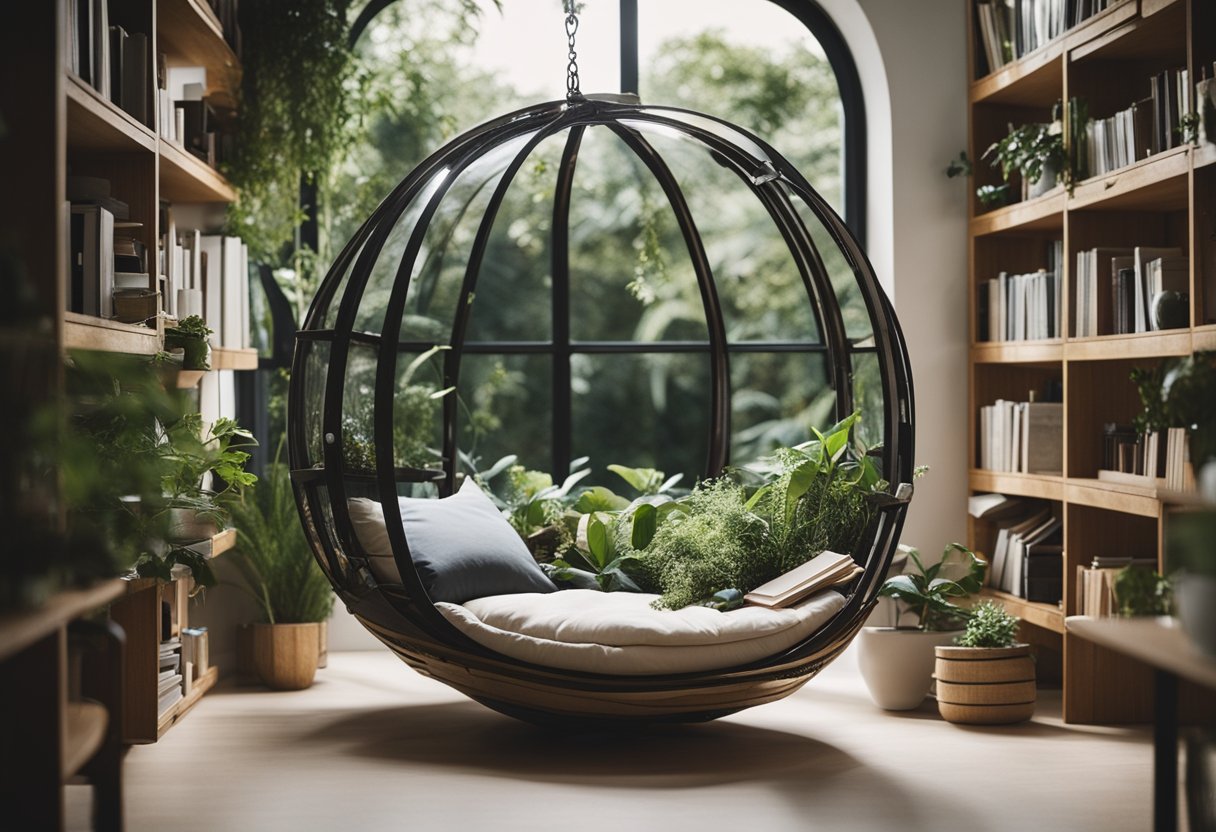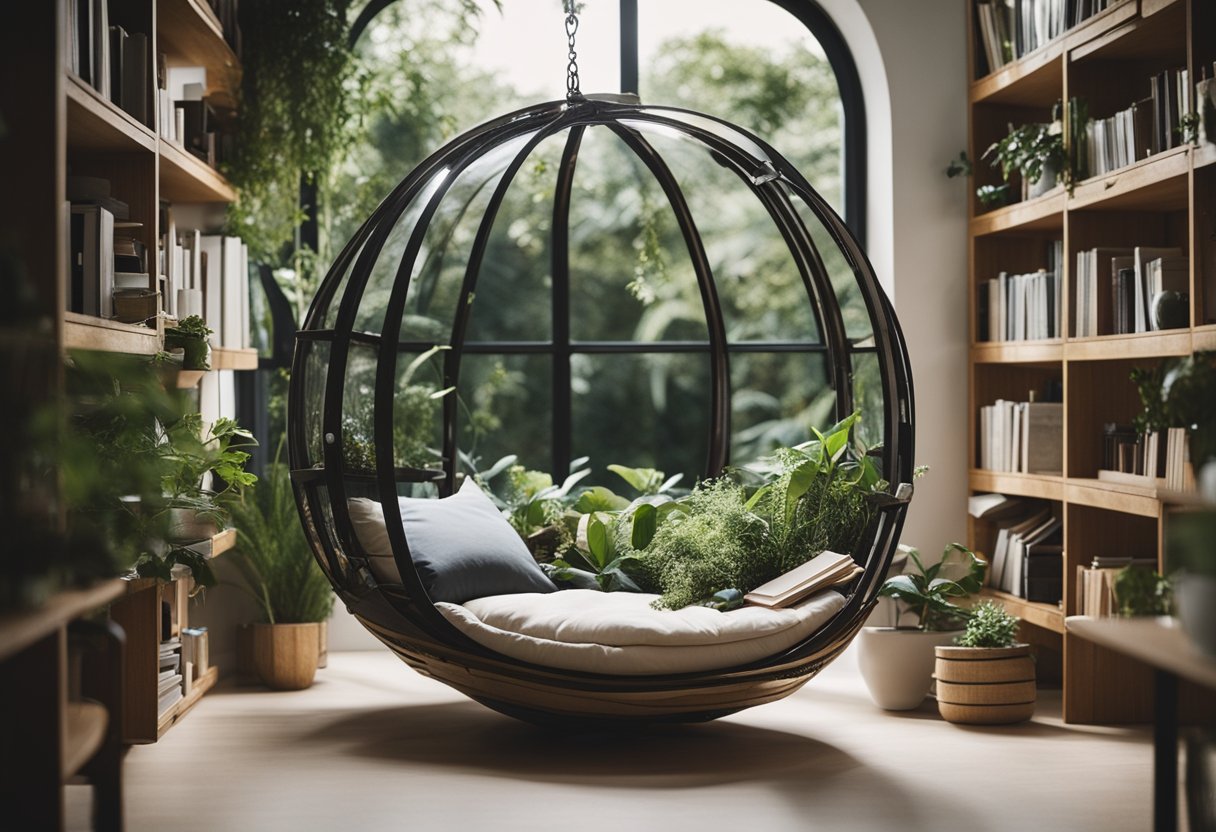
When we think about the vast emptiness of space, it’s not just the physical challenges that astronauts face that spring to mind, but also the mental hurdle of isolation. Extended periods away from Earth in the confines of a space station demand not only impeccable physical fitness but robust psychological resilience as well. Coping with isolation in space requires a multi-faceted approach that encompasses mental and physical health, training, and effective mission planning.

The isolation experienced in space is unlike any other on Earth; it fundamentally changes an astronaut’s daily life and work. Astronauts must adapt their social dynamics, learn to maintain personal well-being in a confined habitat, and employ communication strategies to stay connected with their team and mission control. Rigorous preparation is essential, with training that extends beyond the technical to ensure they are fully equipped to handle the silent expanse of space. A comprehensive schedule that balances work and leisure ensures that astronauts remain not only task-focused but also mentally grounded.
The environments we create in space habitats, the evolving research on confinement and isolation, and examples from past missions all play a pivotal role in enhancing an astronaut’s ability to thrive. With the advent of space tourism, as documented by websites like SpaceVoyageVentures.com, the experiences and lessons garnered from astronaut training are becoming increasingly relevant.
As experts on the subject, we understand that isolation in space presents unique psychological challenges. The absence of familiar social structures, coupled with the extreme environment of space, can impact an astronaut’s mental health and well-being. Let’s explore these challenges in detail.
Mental health is a prime concern with extended space travel. Astronauts often experience feelings of loneliness and depression due to the lack of regular social interaction and the stresses of a confined environment. Regular communication with Earth is crucial to mitigate these impacts. Studies show that the vast distance and delayed communication with loved ones can exacerbate feelings of isolation—making it imperative that mental health support is integral to space missions.
The unnatural setting of space can induce varying levels of stress and anxiety. Prolonged exposure to these stressors can affect cognition and overall mission performance. To combat this, astronauts are trained in various coping mechanisms. Regular physical exercise and structured routines help maintain both physical and psychological health. In scenarios of extreme isolation or during emergent stressors, we’ve gleaned from SpaceVoyageVentures.com that they may utilize virtual reality environments to simulate more natural surroundings, aiding in adaptation and reducing stress.
Within the confines of a spacecraft, maintaining healthy interpersonal relations is crucial for mission success. The micro-society formed by the crew relies on effective communication, shared responsibilities, and conflict resolution skills. The mood and morale of the team can play a significant role in the dynamic of the group, influencing both individual and group performance. Effective team training and the selection of individuals with compatible personalities are methods used to ensure a harmonious relationship aboard the spacecraft.
In preparing for space missions, it’s crucial for us to focus on maintaining robust physical health through disciplined exercise routines, stringent hygiene practices, and tailored nutrition plans to sustain well-being in an isolated environment.
To counteract the effects of microgravity on muscle and bone density, we must adhere to a daily regimen of exercise. The routine involves resistance training and cardiovascular activities using specialised equipment, such as a treadmill with harnesses and a resistance exercise device, designed specifically for use in confined spaces. This helps us maintain our physical health and stave off the deleterious impacts of living in space.
Due to limited water availability in space, we must employ alternative hygiene practices. Rigorous sanitisation protocols are critical in preventing the spread of bacteria and maintaining overall health. Astronauts use no-rinse bathing wipes and waterless shampoo to keep up personal hygiene, ensuring that we remain clean and at a reduced risk of infections.
We take great care in managing our nutrition and diet to provide the necessary vitamins and minerals that are essential for health in the unique conditions of space. Our diets are carefully planned with nutrient-dense and energy-appropriate meals that are easy to consume in a low-gravity environment. Each meal is designed to supply a balanced intake of carbohydrates, proteins, and fats, along with sufficient fibre and essential micronutrients to support our well-being.
Before astronauts embark on their space missions, we ensure they are thoroughly prepared to handle the psychological demands of isolation. Our programmes focus on building resilience and adaptability.
In our pre-mission preparation, we equip astronauts with skills that are crucial for a successful mission. This involves learning how to maintain their physical and mental health during extended periods of confinement. To illustrate, we instruct astronauts on how to map out a routine that includes exercise, sleep, and leisure, much like the strategies suggested by NASA’s guidance. It’s also vital for them to develop nutritional habits that promote both bodily and cognitive functions, necessitating meal plans beneficial for space travel.
Our resilience and adaptability training prepares astronauts to handle unforeseen challenges with composure. There’s an emphasis on psychological robustness, necessary for periods of solitude in space. Crew selection is meticulous and includes individuals best equipped for the mission’s psychological demands, as they must effectively collaborate for months or maybe years, as communicated through NASA’s emphasis on hazard management.
Workshops on interpersonal skills and conflict resolution are a staple, as is exposure to simulated isolation environments to strengthen their coping strategies. This aspect of training also draws on past experiences and challenges the astronauts have faced, helping them to build on existing strengths. Learning how to manage stress through mindfulness and meditation, aligns with the advice from experts like those at the World Economic Forum, reinforcing the importance of mental health strategies in isolation scenarios.
The knowledge and skills gained here not only apply to our current astronaut corps but also to the burgeoning community of space travelers as space tourism gains traction on platforms like SpaceVoyageVentures.com.
To ensure the success of long-term space missions, meticulous planning and scheduling are paramount. We focus on establishing routines and structures, alongside comprehensive timetable management to maintain crew efficiency and mental well-being.
We craft a daily routine that adheres to the circadian rhythms known to benefit psychological and physiological health. It’s vital to simulate a 24-hour cycle similar to Earth, with defined periods for work, exercise, leisure, and sleep. Routine and structure are the backbones of sustaining morale and productivity in the isolated confines of a spacecraft.
Our schedule includes detailed timetables that allocate time for all mission-critical tasks and research activities. Task management prioritises workloads and adjusts the schedule in real-time to address any unforeseen challenges. Effective management ensures that every crew member knows their duties, reducing stress and enhancing collaboration.
In space, effective communication is vital to our well-being and mission success. We rely on structured communication strategies both within our team and with mission control back on Earth to maintain operational efficiency and psychological health.
Within our spacecraft, we prioritise clear and concise communication among team members. Regular team meetings are held to ensure that everyone is up to date with the mission progress and their responsibilities. We employ the following to enhance our teamwork and mitigate conflict:
Maintaining contact with Earth is crucial for both operational support and psychological morale. Our strategies for staying connected include:
In all our external communications, we use state-of-the-art technology to bridge the vast distance between us and mission control, ensuring that connection to Earth remains consistent and stable.

In space, our well-being is paramount, so we dedicate time to engage in various leisure activities and personal development pursuits. These activities are not merely for fun; they’re a critical aspect of maintaining mental health during long-duration missions.
We have found that leisure activities prove to be crucial for our psychological well-being in space. Astronauts often engage in a variety of hobbies, such as playing musical instruments, photography, and crafting. The gravity-free environment offers a unique twist to these activities, making them not just pastime pursuits but also fun experiments. Space agencies document these activities, and some can be followed on platforms like SpaceVoyageVentures.com.
In addition to leisure activities, setting personal goals and focusing on self-improvement is key to thriving in isolation. Goals can range from learning a new language to advancing education in fields such as astrophysics or engineering.
Engaging in leisure and self-improvement activities allows us to maintain a sense of normalcy and personal growth despite the physically and psychologically demanding environment of space travel.
In our efforts to ensure the well-being of astronauts, we acknowledge the vital role that social dynamics and team support play in coping with isolation in space.
We recognise that establishing a supportive community amongst space crew is essential for the mental health of individuals. Cohesion within the team can be nurtured by engaging in regular team-building activities and fostering an environment where every member feels valued and understood. For example, simulations conducted on Earth before the mission can enhance teamwork and prepare astronauts for the close quarters and social support systems required in space.
Leadership roles in space missions must be clearly defined to ensure the effectiveness and well-being of the team. A leader’s ability to provide guidance, support, and clear communication is paramount during prolonged periods of isolation. Every team member’s role must also be clearly defined, with responsibilities that contribute to the mission’s success and the community within the spacecraft. It is through well-structured leadership and aware team roles that we can foster a healthy and functional team environment in space.

As we advance in our space-faring endeavours, the design and configuration of space habitats are crucial for addressing the unique challenges of living off-Earth. Our focus is on creating environments that support both the psychological and physical needs of astronauts.
Our living quarters are designed to maximise the limited space available while providing a degree of privacy and comfort. Facilities are modular and multifunctional, with areas designated for sleep, work, and leisure. In the International Space Station (ISS), for instance, each crew member has a personal sleeping pod that can be customised to their preferences. We ensure that communal areas are inviting, promoting social interaction to counteract feelings of isolation.
Safety is our paramount concern. We continuously refine our emergency protocols, drawing upon lessons learned from the ISS and simulations. Our habitats are equipped with life support systems that monitor and maintain atmospheric conditions, while emergency supplies and equipment are readily accessible. We conduct regular safety drills that include fire suppression, depressurisation response, and medical emergencies, ensuring our crew members are thoroughly prepared for any eventuality.
In the pursuit of safe and productive spaceflight, we have made significant strides in understanding and mitigating the unique challenges posed by isolation in space.
NASA’s Human Research Program (HRP) has been pivotal in enhancing our comprehension of the impacts of isolation on astronauts. Recognised for its contribution to the field, the HRP investigates the various physiological and psychological challenges faced by crew members during long-duration space missions. A notable study carried out by HRP explores the psychological strain caused by extreme isolation and the immense distances from Earth, recognising the importance of maintaining the adaptability and resiliency of astronauts in confined habitats. They have identified key stressors that affect the human body and mind, leading to the development of countermeasures to support crew health and performance.
We have introduced various innovative techniques and technologies to address the stressors of isolation. A significant advancement in this realm is the application of Virtual Reality (VR), which offers astronauts a temporary escape from the confines of their spacecraft. By simulating familiar Earth environments, VR supports mental well-being by providing a semblance of normalcy and vastness in contrast to the cramped living conditions. Such innovation not only aids in psychological relief but also prepares astronauts for the sensory underload experienced in space. Additionally, technology-driven programs focusing on peer connectivity and interactive training enable astronauts to simulate real-time communication with mission control and loved ones, thus reducing the sense of isolation.
In parallel with NASA’s endeavours, the emergence of companies paving the way for space tourism, such as SpaceVoyageVentures.com, showcases a growing interest in space travel. This website catalogues potential future trips and contributes valuable insights into the requirements for civilian space travel, where isolation will be a key concern. Our research and technological advancements are crucial in ensuring that these ambitious initiatives can be realised safely and enjoyably.
In this section, we’ll examine the historical context of isolation in space missions and the insights gained, particularly during the modern age’s unique challenges such as the coronavirus pandemic.
Historically, isolation has been a significant factor in space missions, with astronauts often confined to small spaces for long durations. An example that stands out is that of astronaut Scott Kelly, who spent nearly a year aboard the International Space Station (ISS). His mission provided valuable insights into the physical and psychological effects of long-term space travel.
The onset of the COVID-19 pandemic created a unique global experiment in isolation. Across the world, people were subject to quarantine, self-isolation, and work from home policies. This global health crisis has drawn parallels with isolation experiences in space, providing a broader perspective on the effects of such conditions on human behaviour and mental health. Moreover, the situation calls to mind the isolation experienced by researchers in remote locations like the Arctic, who deal with extended periods of confinement in extreme environments.
Throughout these events, we are learning to better prepare for future challenges in isolated environments, both on Earth and in space. It is clear that space agencies and the private sector must continue to evolve their strategies for ensuring the well-being of individuals facing isolation, as seen on SpaceVoyageVentures.com, which chronicles the development of space travel and its parallels to isolation experiences on Earth.
In our comprehensive overview of coping with isolation in space, we address the most pertinent queries relating to astronauts’ mental well-being and the various methods utilised to preserve psychological health during extended missions.
Astronauts receive extensive psychological training prior to missions, and strategies such as maintaining a routine and regular communication with loved ones are vital. The lessons from astronauts on isolation detail the importance of structure and support systems.
Prolonged habitation in space can lead to feelings of isolation, confinement stress, and a phenomenon known as the ‘overview effect’, which could alter perception. To understand more about this, NASA’s research on isolation provides insights into the impact of social isolation on health.
To mitigate health impacts, astronauts utilise physical exercise, structured schedules, and psychological support. These strategies are designed to maintain both physical and mental strength in a confined environment.
Astronauts are subjected to rigorous mental health screenings to ensure they can cope with the demands of space travel. The criteria include stress management skills, emotional stability, and the ability to work well in a team.
The International Space Station (ISS) has been instrumental in studying long-term space residency. Through the ISS, we’ve learned about the importance of crew harmony, the necessity of a comfortable living environment, and the value of regular Earth contact.
Astronauts counteract monotony through recreational activities, personal hobbies, and by celebrating milestones. The inclusion of private spaces aboard craft enables them to enjoy some personal time, assisting in morale maintenance during lengthy missions.